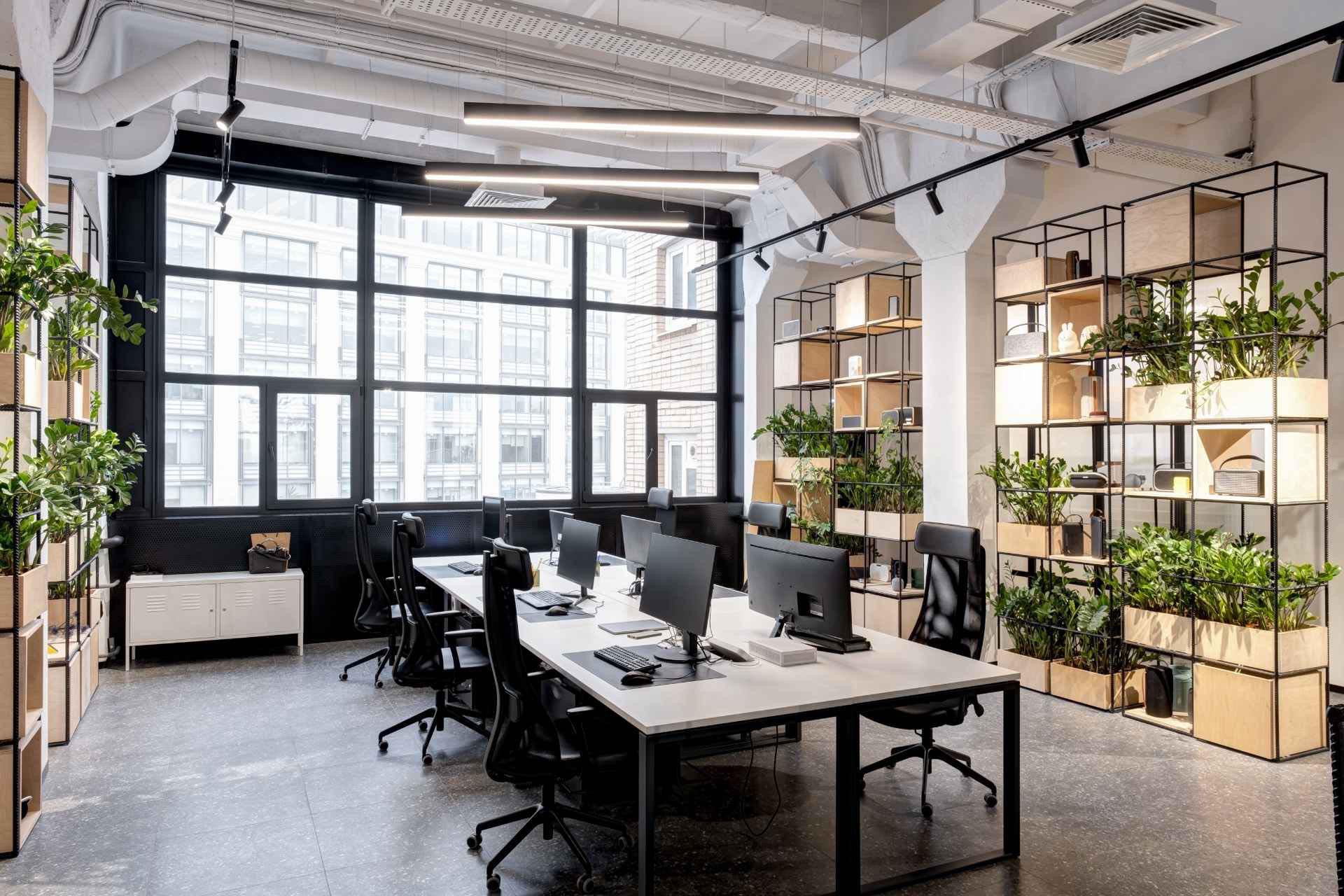 Menu
Menu
Main Menu
 Close
Close
Insights

It’s no secret that the workplace is changing.
Some shifts are more jarring than others (going fully remote is a bit hard to miss), whereas others might fly under the radar: For instance, the new wave of office furniture design trends expected to dominate this year.
These adaptations might seem like nothing to pay attention to when facing larger challenges. Still, research proves the layout and design of a workspace can have monumental effects on employee productivity and satisfaction.
So, if you want to keep your workforce well-equipped for the future, it’s worth keeping an eye on some of the improvements facing modern office furniture.
Let’s review a few of them.
It’s not often that office spaces and nature are treated as a pair — or even mentioned in the same sentence. And, for most workspaces worldwide, that’s an oversight that’s required fixing for quite some time.
Fortunately, awareness regarding the need for biophilic design in offices seems to be on the rise. The term — derived from the word biophilia (love of nature) — might sound like just another fad, yet it can provide very real benefits.
The trend has already encouraged thousands of offices to reconnect with nature through their furniture design. Rather than fill their space with rows of plastic office workstations, chairs, and fluorescent lights, workforces are encouraged to invest in natural materials and lighting.
Even minor elements, like adding a wooden table to your break area, can keep employees from feeling as if they’re trapped in an artificial space. Of course, the more natural pieces you can incorporate, the better.
More people than ever want to work from home.
Though this isn’t a simple challenge to overcome, many companies are already investing in a simple solution: bringing home to the workplace.
To ease the return to regular offices, some workforces are attempting to increase comfort levels throughout their space. Options like ergonomic office chairs and desks remain a popular choice, though unconventional items are also making an appearance, including:
These inclusions might seem minor, yet they could have a large impact on workers’ willingness to return to the office — and stay there. After all, comfort is a basic need. When employees feel as if that need is met, they will remain more productive and more eager to complete their tasks.
Now that we’re considering the impacts of remote work, it’s also worth mentioning the increased need for flexibility in the office.
When working from home, employees could operate from virtually anywhere they chose, even alternating from room to room throughout the day. Moving forward, workforces will need to consider this need when designing their office layout.
Ultimately, satisfying this requirement depends on the number of options provided. For instance, you may want to consider offering different variations of the office desk, such as modular and standing options. Similarly, you could open new rooms to grant employees the ability to change up their scenery.
Though adding flexibility and comfort often means opening the workspace, it’s important not to forget the human need for privacy.
Whether they desire a quiet place to focus on an important project or simply sit on their own for a few moments, supplying “private” areas is just as important as ever.
Of course, this isn’t exactly a new concept — but it’s one that is changing for the 21st century. Today, there are more options than ever for private office workstations, such as the sleek, new age PODS.
Office furniture trends might seem minor, yet it’s clear that they offer transformative impacts for business worldwide. By keeping an eye on 2022’s developments, you can ensure your workforce is equipped with the tools they need to face new ways of working.
Sign up with your email address to receive news and updates.